| Citation: |
Xiangwei Qu, Xiaowei Sun. Impedance spectroscopy for quantum dot light-emitting diodes[J]. Journal of Semiconductors, 2023, 44(9): 091603. doi: 10.1088/1674-4926/44/9/091603
****
X W Qu, X W Sun. Impedance spectroscopy for quantum dot light-emitting diodes[J]. J. Semicond, 2023, 44(9): 091603. doi: 10.1088/1674-4926/44/9/091603
|
Impedance spectroscopy for quantum dot light-emitting diodes
DOI: 10.1088/1674-4926/44/9/091603
More Information
-
Abstract
Impedance spectroscopy has been increasingly employed in quantum dot light-emitting diodes (QLEDs) to investigate the charge dynamics and device physics. In this review, we introduce the mathematical basics of impedance spectroscopy that applied to QLEDs. In particular, we focus on the Nyquist plot, Mott−Schottky analysis, capacitance-frequency and capacitance-voltage characteristics, and the dC/dV measurement of the QLEDs. These impedance measurements can provide critical information on electrical parameters such as equivalent circuit models, characteristic time constants, charge injection and recombination points, and trap distribution of the QLEDs. However, this paper will also discuss the disadvantages and limitations of these measurements. Fundamentally, this review provides a deeper understanding of the device physics of QLEDs through the application of impedance spectroscopy, offering valuable insights into the analysis of performance loss and degradation mechanisms of QLEDs. -
References
[1] Colvin V L, Schlamp M C, Alivisatos A P. Light-emitting diodes made from cadmium selenide nanocrystals and a semiconducting polymer. Nature, 1994, 370, 354 doi: 10.1038/370354a0[2] Dai X L, Zhang Z X, Jin Y Z, et al. Solution-processed, high-performance light-emitting diodes based on quantum dots. Nature, 2014, 515, 96 doi: 10.1038/nature13829[3] Shen H B, Gao Q, Zhang Y B, et al. Visible quantum dot light-emitting diodes with simultaneous high brightness and efficiency. Nat Photonics, 2019, 13, 192 doi: 10.1038/s41566-019-0364-z[4] Deng Y Z, Peng F, Lu Y, et al. Solution-processed green and blue quantum-dot light-emitting diodes with eliminated charge leakage. Nat Photonics, 2022, 16, 505 doi: 10.1038/s41566-022-00999-9[5] Song J J, Wang O Y, Shen H B, et al. Quantum dot LEDs: Over 30% external quantum efficiency light-emitting diodes by engineering quantum dot-assisted energy level match for hole transport layer. Adv Funct Mater, 2019, 29, 1970226 doi: 10.1002/adfm.201970226[6] Kim T, Kim K H, Kim S, et al. Efficient and stable blue quantum dot light-emitting diode. Nature, 2020, 586, 385 doi: 10.1038/s41586-020-2791-x[7] Qian L, Zheng Y, Xue J G, et al. Stable and efficient quantum-dot light-emitting diodes based on solution-processed multilayer structures. Nat Photonics, 2011, 5, 543 doi: 10.1038/nphoton.2011.171[8] Shirasaki Y, Supran G J, Bawendi M G, et al. Emergence of colloidal quantum-dot light-emitting technologies. Nat Photonics, 2013, 7, 13 doi: 10.1038/nphoton.2012.328[9] Zhang Z X, Ye Y X, Pu C D, et al. High-performance, solution-processed, and insulating-layer-free light-emitting diodes based on colloidal quantum dots. Adv Mater, 2018, 30, e1801387 doi: 10.1002/adma.201801387[10] Mashford B S, Stevenson M, Popovic Z, et al. High-efficiency quantum-dot light-emitting devices with enhanced charge injection. Nat Photonics, 2013, 7, 407 doi: 10.1038/nphoton.2013.70[11] Cao W R, Xiang C Y, Yang Y X, et al. Highly stable QLEDs with improved hole injection via quantum dot structure tailoring. Nat Commun, 2018, 9, 2608 doi: 10.1038/s41467-018-04986-z[12] Xiang C Y, Wu L J, Lu Z Z, et al. High efficiency and stability of ink-jet printed quantum dot light emitting diodes. Nat Commun, 2020, 11, 1646 doi: 10.1038/s41467-020-15481-9[13] Pu C D, Dai X L, Shu Y F, et al. Electrochemically-stable ligands bridge the photoluminescence-electroluminescence gap of quantum dots. Nat Commun, 2020, 11, 937 doi: 10.1038/s41467-020-14756-5[14] Zhao J Y, Chen L X, Li D Z, et al. Large-area patterning of full-color quantum dot arrays beyond 1000 pixels per inch by selective electrophoretic deposition. Nat Commun, 2021, 12, 4603 doi: 10.1038/s41467-021-24931-x[15] Jia S Q, Tang H D, Ma J R, et al. High performance inkjet-printed quantum-dot light-emitting diodes with high operational stability. Adv Opt Mater, 2021, 9, 2101069 doi: 10.1002/adom.202101069[16] Liu D Q, Cao S, Wang S Y, et al. Highly stable red quantum dot light-emitting diodes with long T95 operation lifetimes. J Phys Chem Lett, 2020, 11, 3111 doi: 10.1021/acs.jpclett.0c00836[17] Chen X T, Lin X F, Zhou L K, et al. Blue light-emitting diodes based on colloidal quantum dots with reduced surface-bulk coupling. Nat Commun, 2023, 14, 284 doi: 10.1038/s41467-023-35954-x[18] Yu P L, Yuan Q L, Zhao J L, et al. Electronic and excitonic processes in quantum dot light-emitting diodes. J Phys Chem Lett, 2022, 13, 2878 doi: 10.1021/acs.jpclett.2c00604[19] Kim S K, Kim Y S. Charge carrier injection and transport in QLED layer with dynamic equilibrium of trapping/de-trapping carriers. J Appl Phys, 2019, 126, 035704 doi: 10.1063/1.5109089[20] Wu Z H, Liu P, Qu X W, et al. Identifying the surface charges and their impact on carrier dynamics in quantum-dot light-emitting diodes by impedance spectroscopy. Adv Opt Mater, 2021, 9, 2100389 doi: 10.1002/adom.202100389[21] Chen S, Cao W R, Liu T L, et al. On the degradation mechanisms of quantum-dot light-emitting diodes. Nat Commun, 2019, 10, 765 doi: 10.1038/s41467-019-08749-2[22] Qu X W, Ma J R, Liu P, et al. On the voltage behavior of quantum dot light-emitting diode. Nano Res, 2023, 16, 5511 doi: 10.1007/s12274-022-5106-8[23] Doe T, Kitano K, Yamamoto S, et al. Evaluation of degradation behavior in quantum dot light-emitting diode with different hole transport materials via transient electroluminescence. Appl Phys Lett, 2021, 118, 203503 doi: 10.1063/5.0041689[24] Su Q, Sun Y Z, Zhang H, et al. Quantum dots: Origin of positive aging in quantum-dot light-emitting diodes. Adv Sci, 2018, 5, 1870058 doi: 10.1002/advs.201870058[25] Acharya K P, Titov A, Hyvonen J, et al. High efficiency quantum dot light emitting diodes from positive aging. Nanoscale, 2017, 9, 14451 doi: 10.1039/C7NR05472F[26] Chen Z N, Su Q, Qin Z Y, et al. Effect and mechanism of encapsulation on aging characteristics of quantum-dot light-emitting diodes. Nano Res, 2021, 14, 320 doi: 10.1007/s12274-020-3091-3[27] Ding S, Wu Z, Qu X, et al. Impact of the resistive switching effects in ZnMgO electron transport layer on the aging characteristics of quantum dot light-emitting diodes. Appl Phys Lett, 2020, 117, 093501 doi: 10.1063/5.0019140[28] Chen D S, Chen D, Dai X L, et al. Shelf-stable quantum-dot light-emitting diodes with high operational performance. Adv Mater, 2020, 32, 2006178 doi: 10.1002/adma.202006178[29] Von Hauff E. Impedance spectroscopy for emerging photovoltaics. J Phys Chem C, 2019, 123, 11329 doi: 10.1021/acs.jpcc.9b00892[30] Nowy S, Ren W, Elschner A, et al. Impedance spectroscopy as a probe for the degradation of organic light-emitting diodes. J Appl Phys, 2010, 107, 054501 doi: 10.1063/1.3294642[31] Pingree L S C, Scott B J, Russell M T, et al. Negative capacitance in organic light-emitting diodes. Appl Phys Lett, 2005, 86, 073509 doi: 10.1063/1.1865346[32] Zhang L, Nakanotani H, Adachi C. Capacitance-voltage characteristics of a 4, 4’-bis [(N-carbazole)styryl]biphenyl based organic light-emitting diode: Implications for characteristic times and their distribution. Appl Phys Lett, 2013, 103, 093301 doi: 10.1063/1.4819436[33] Iván Mora-Seró, Germà Garcia-Belmonte, Pablo P Boix, et al. Impedance spectroscopy characterisation of highly efficient silicon solar cells under different light illumination intensities. Energy Environ Sci, 2009, 2, 678 doi: 10.1039/b812468j[34] Guerrero A, Bisquert J, Garcia-Belmonte G. Impedance spectroscopy of metal halide perovskite solar cells from the perspective of equivalent circuits. Chem Rev, 2021, 121, 14430 doi: 10.1021/acs.chemrev.1c00214[35] Von Hauff E, Klotz D. Impedance spectroscopy for perovskite solar cells: Characterisation, analysis, and diagnosis. J Mater Chem C, 2022, 10, 742 doi: 10.1039/D1TC04727B[36] Suresh M S. Measurement of solar cell parameters using impedance spectroscopy. Sol Energy Mater Sol Cells, 1996, 43, 21 doi: 10.1016/0927-0248(95)00153-0[37] Hegedus S S, Fagen E A. Midgap states in a-Si: H and a-SiGe: H p-i-n solar cells and Schottky junctions by capacitance techniques. J Appl Phys, 1992, 71, 5941 doi: 10.1063/1.350444[38] Taberna P L, Simon P, Fauvarque J F. Electrochemical characteristics and impedance spectroscopy studies of carbon-carbon supercapacitors. J Electrochem Soc, 2003, 150, A292 doi: 10.1149/1.1543948[39] Srinivasan R, Fasmin F. An Introduction to Electrochemical Impedance Spectroscopy. CRC Press, 2021 doi: doi.org/10.1201/9781003127932[40] Bao H, Chen C L, Cao Y Q, et al. Quantitative determination of charge accumulation and recombination in operational quantum dots light emitting diodes via time-resolved electroluminescence spectroscopy. J Phys Chem Lett, 2023, 14, 1777 doi: 10.1021/acs.jpclett.3c00070[41] Qu X W, Ma J R, Shan C W, et al. Trap state-assisted electron injection in blue quantum dot light-emitting diode. Appl Phys Lett, 2022, 121, 113507 doi: 10.1063/5.0104341[42] Park Y, Klöckner B, Hahm D, et al. Origin of enhanced efficiency and stability in diblock copolymer-grafted Cd-free quantum dot-based light-emitting diodes. J Mater Chem C, 2021, 9, 10398 doi: 10.1039/D1TC02534A[43] Yu P L, Zhu X X, Bai J L, et al. Calibrating the hole mobility measurements implemented by transient electroluminescence technology. ACS Appl Mater Interfaces, 2022, 14, 52253 doi: 10.1021/acsami.2c14507[44] Xiao H, Wang K, Wang R, et al. Equivalent circuit of quantum-dot LED and acquisition of carrier lifetime in active layer. IEEE Electron Device Lett, 2020, 41, 87 doi: 10.1109/LED.2019.2954326[45] Chung D S, Davidson-Hall T, Cotella G, et al. Significant lifetime enhancement in QLEDs by reducing interfacial charge accumulation via fluorine incorporation in the ZnO electron transport layer. Nano-Micro Lett, 2022, 14, 212 doi: 10.1007/s40820-022-00970-x[46] Yi Y Q Q, Qi D W, Wei H H, et al. Molecular design of diazo compound for carbene-mediated cross-linking of hole-transport polymer in QLED with reduced energy barrier and improved charge balance. ACS Appl Mater Interfaces, 2022, 14, 39149 doi: 10.1021/acsami.2c11108[47] Fang Y F, Bai P L, Li J Y, et al. Highly efficient red quantum dot light-emitting diodes by balancing charge injection and transport. ACS Appl Mater Interfaces, 2022, 14, 21263 doi: 10.1021/acsami.2c04369[48] Zhang M R, Guo F, Lei S Y, et al. Positive temperature dependence of the electroluminescent performance in a colloidal quantum dot light-emitting diode. Dyes Pigments, 2021, 195, 109703 doi: 10.1016/j.dyepig.2021.109703[49] Li J L, Liang Z, Su Q C, et al. Small molecule-modified hole transport layer targeting low turn-on-voltage, bright, and efficient full-color quantum dot light emitting diodes. ACS Appl Mater Interfaces, 2018, 10, 3865 doi: 10.1021/acsami.7b16261[50] Liang S S, Wang S J, Wu Z, et al. Interfacial charge modulation: An efficient strategy for stable blue quantum-dot light-emitting diodes. Adv Opt Mater, 2023, 11, 2201802 doi: 10.1002/adom.202201802[51] Zhao W C, Xie L M, Yi Y Q Q, et al. Optimizing the central steric hindrance of cross-linkable hole transport materials for achieving highly efficient RGB QLEDs. Mater Chem Front, 2020, 4, 3368 doi: 10.1039/D0QM00591F[52] Zhang X Y, Li D W, Zhang Z H, et al. Constructing effective hole transport channels in cross-linked hole transport layer by stacking discotic molecules for high performance deep blue QLEDs. Adv Sci, 2022, 9, 2200450 doi: 10.1002/advs.202200450[53] Kim D, Kwon O, Kim M, et al. Charge carrier analysis via impedance spectroscopy and the achievement of high performance in CdSe/ZnS: Di-[4-(N, N-di-p-tolyl-amino)-phenyl]cyclohexane hybrid quantum dot light-emitting diodes. Org Electron, 2022, 108, 106593 doi: 10.1016/j.orgel.2022.106593[54] Tang P Y, Xie L M, Xiong X Y, et al. Realizing 22.3% EQE and 7-fold lifetime enhancement in QLEDs via blending polymer TFB and cross-linkable small molecules for a solvent-resistant hole transport layer. ACS Appl Mater Interfaces, 2020, 12, 13087 doi: 10.1021/acsami.0c01001[55] You C, Titov A, Kim B H, et al. Impedance measurements on QLED devices: Analysis of high-frequency loop in terms of material properties. J Solid State Electrochem, 2020, 24, 3083 doi: 10.1007/s10008-020-04765-1[56] Xu L L, Liu G Y, Xiang H Y, et al. Charge-carrier dynamics and regulation strategies in perovskite light-emitting diodes: From materials to devices. Appl Phys Rev, 2022, 9, 021308 doi: 10.1063/5.0080087[57] Zhang M R, Guo F, Zhou Q Z, et al. Enhanced performance through trap states passivation in quantum dot light emitting diode. J Lumin, 2021, 234, 117946 doi: 10.1016/j.jlumin.2021.117946[58] Zhu X X, Wang Y C, Ji W Y. Unraveling the turn-on limitation of quantum-dot electroluminescence via a stepwise-increasing voltage measurement. Phys Rev Applied, 2023, 19, 024010 doi: 10.1103/PhysRevApplied.19.024010[59] Wang R J, Wang T, Kang Z H, et al. Efficient flexible quantum-dot light-emitting diodes with unipolar charge injection. Opt Express, 2022, 30, 15747 doi: 10.1364/OE.456449[60] Blauth C, Mulvaney P, Hirai T. Negative capacitance as a diagnostic tool for recombination in purple quantum dot LEDs. J Appl Phys, 2019, 125, 195501 doi: 10.1063/1.5088177[61] Ershov M, Liu H C, Li L, et al. Negative capacitance effect in semiconductor devices. IEEE Trans Electron Devices, 1998, 45, 2196 doi: 10.1109/16.725254[62] Walter T, Herberholz R, Müller C, et al. Determination of defect distributions from admittance measurements and application to Cu(In, Ga)Se2 based heterojunctions. J Appl Phys, 1996, 80, 4411 doi: 10.1063/1.363401[63] Herberholz R, Igalson M, Schock H W. Distinction between bulk and interface states in CuInSe2/CdS/ZnO by space charge spectroscopy. J Appl Phys, 1998, 83, 318 doi: 10.1063/1.366686[64] Xu L, Wang J, Hsu J W . Transport effects on capacitance-frequency analysis for defect characterization in organic photovoltaic devices. Phys Rev Applied, 2016, 6, 064020 doi: 10.1103/PhysRevApplied.6.064020[65] Lee H, Jeong B G, Bae W K, et al. Surface state-induced barrierless carrier injection in quantum dot electroluminescent devices. Nat Commun, 2021, 12, , 5669 doi: 10.1038/s41467-021-25955-z[66] Wang Y C, Chen Z J, Wang T, et al. Efficient structure for InP/ZnS-based electroluminescence device by embedding the emitters in the electron-dominating interface. J Phys Chem Lett, 2020, 11, 1835 doi: 10.1021/acs.jpclett.0c00112[67] Lu Z G, Zhang X Y, Wang W J, et al. Highly stable quantum dot light-emitting diodes with improved interface contacting via violet irradiation. Appl Surf Sci, 2023, 615, 156339 doi: 10.1016/j.apsusc.2023.156339[68] Lee C Y, Naik Mude N, Lampande R, et al. Efficient cadmium-free inverted red quantum dot light-emitting diodes. ACS Appl Mater Interfaces, 2019, 11, 36917 doi: 10.1021/acsami.9b12514[69] Qu X W, Ma J R, Jia S Q, et al. Improved blue quantum dot light-emitting diodes via chlorine passivated ZnO nanoparticle layer. Chin Phys B, 2021, 30, 118503 doi: 10.1088/1674-1056/ac22a3[70] Du W X, Cheng C Y, Tian J J. Efficient solution-processed InP quantum-dots light-emitting diodes enabled by suppressing hole injection loss. Nano Res, 2023, 16, 7511 doi: 10.1007/s12274-022-5268-4[71] Kim D, Lee S, Kim J, et al. Understanding the electroluminescence mechanism of CdSe/ZnS quantum-dot light-emitting diodes with a focus on charge carrier behavior in quantum-dot emissive layers. IEEE Electron Device Lett, 2023, 44, 959 doi: 10.1109/LED.2023.3268078[72] Qu X W, Zhang N, Cai R, et al. Improving blue quantum dot light-emitting diodes by a lithium fluoride interfacial layer. Appl Phys Lett, 2019, 114, 071101 doi: 10.1063/1.5087102[73] Guo Y, Liu B C, Chen Z, et al. Water-passivated ZnMgO nanoparticles for blue quantum dot light-emitting diodes. J Mater Chem C, 2021, 9, 10381 doi: 10.1039/D1TC01582F[74] Ning M J, Cao S, Li Q Y, et al. Improving performance of InP-based quantum dot light-emitting diodes by controlling defect states of the ZnO electron transport layer. J Phys Chem C, 2023, 127, 824 doi: 10.1021/acs.jpcc.2c07893[75] Sun Y Z, Chen W, Wu Y H, et al. A low-temperature-annealed and UV-ozone-enhanced combustion derived nickel oxide hole injection layer for flexible quantum dot light-emitting diodes. Nanoscale, 2019, 11, 1021 doi: 10.1039/C8NR08976K[76] Zhang W D, Tan Y Z, Duan X J, et al. High quantum yield blue InP/ZnS/ZnS quantum dots based on bromine passivation for efficient blue light-emitting diodes. Adv Opt Mater, 2022, 10, 2200685 doi: 10.1002/adom.202200685[77] Feng H W, Yu Y C, Tang G, et al. Carrier transport regulation with hole transport trilayer for efficiency enhancement in quantum dot light-emitting devices. J Lumin, 2021, 231, 117785 doi: 10.1016/j.jlumin.2020.117785[78] Zhang H M, Yuan Q L, Wang T, et al. Unraveling the effect of shell thickness on charge injection in blue quantum-dot light-emitting diodes. Appl Phys Lett, 2021, 119, 243504 doi: 10.1063/5.0068934[79] Shen Q B, Hao Y L, Ma L Y, et al. Comparative study of red/green/blue quantum-dot light-emitting diodes by time-resolved transient electroluminescence. J Phys Chem Lett, 2021, 12, 7019 doi: 10.1021/acs.jpclett.1c01560[80] Zhang H, Chen S M. An ZnMgO: PVP inorganic–organic hybrid electron transport layer: Towards efficient bottom-emission and transparent quantum dot light-emitting diodes. J Mater Chem C, 2019, 7, 2291 doi: 10.1039/C8TC06121A[81] Zhang T Q, Liu P, Zhao F Q, et al. Electric dipole modulation for boosting carrier recombination in green InP QLEDs under strong electron injection. Nanoscale Adv, 2023, 5, 385 doi: 10.1039/D2NA00705C[82] Zhu B Y, Ji W Y, Duan Z Q, et al. Low turn-on voltage and highly bright Ag-In-Zn-S quantum dot light-emitting diodes. J Mater Chem C, 2018, 6, 4683 doi: 10.1039/C8TC01022F[83] Su Q, Zhang H, Chen S M. Identification of excess charge carriers in InP-based quantum-dot light-emitting diodes. Appl Phys Lett, 2020, 117, 053502 doi: 10.1063/5.0019790[84] Li Y Z, He P H, Chen S T, et al. Inkjet-printed oxide thin-film transistors based on nanopore-free aqueous-processed dielectric for active-matrix quantum-dot light-emitting diode displays. ACS Appl Mater Interfaces, 2019, 11, 28052 doi: 10.1021/acsami.9b08258[85] Kang B H, Lee J S, Lee S W, et al. Efficient exciton generation in atomic passivated CdSe/ZnS quantum dots light-emitting devices. Sci Rep, 2016, 6, 1 doi: 10.1038/s41598-016-0001-8[86] Ma J R, Tang H D, Qu X W, et al. A dC/dV measurement for quantum-dot light-emitting diodes. Chin Phys Lett, 2022, 39, 128401 doi: 10.1088/0256-307X/39/12/128401[87] Xiao X T, Ye T K, Sun J Y, et al. Capacitance–voltage characteristics of perovskite light-emitting diodes: Modeling and implementing on the analysis of carrier behaviors. Appl Phys Lett, 2022, 120, 243501 doi: 10.1063/5.0088231[88] Lee K, Yun J, Lee S, et al. Understanding of the aging pattern in quantum dot light-emitting diodes using low-frequency noise. Nanoscale, 2020, 12, 15888 doi: 10.1039/D0NR01885F[89] Ji W Y, Liu S H, Zhang H, et al. Ultrasonic spray processed, highly efficient all-inorganic quantum-dot light-emitting diodes. ACS Photonics, 2017, 4, 1271 doi: 10.1021/acsphotonics.7b00216[90] Mock J, Kallergi M, Groß E, et al. Revealing the negative capacitance effect in silicon quantum dot light-emitting diodes via temperature-dependent capacitance-voltage characterization. IEEE Photonics J, 2022, 14, 1 doi: 10.1109/JPHOT.2022.3184401[91] Ray B, Baradwaj A G, Boudouris B W, et al. Defect characterization in organic semiconductors by forward bias capacitance–voltage (FB-CV) analysis. J Phys Chem C, 2014, 118, 17461 doi: 10.1021/jp505500r[92] Kirchartz T, Gong W, Hawks S A, et al. Sensitivity of the Mott–Schottky analysis in organic solar cells. J Phys Chem C, 2012, 116, 7672 doi: 10.1021/jp300397f[93] Almora O, Aranda C, Mas-Marzá E, et al. On Mott-Schottky analysis interpretation of capacitance measurements in organometal perovskite solar cells. Appl Phys Lett, 2016, 109, 173903 doi: 10.1063/1.4966127[94] Mingebach M, Deibel C, Dyakonov V. Built-in potential and validity of the Mott-Schottky analysis in organic bulk heterojunction solar cells. Phys Rev B, 2011, 84, 153201 doi: 10.1103/PhysRevB.84.153201[95] Zonno I, Martinez-Otero A, Hebig J C, et al. Understanding Mott-Schottky measurements under illumination in organic bulk heterojunction solar cells. Phys Rev Applied, 2017, 7, 034018 doi: 10.1103/PhysRevApplied.7.034018[96] Qu X W, Xiang G H, Ma J R, et al. Identifying the dominant carrier of CdSe-based blue quantum dot light-emitting diode. Appl Phys Lett, 2023, 122, 113501 doi: 10.1063/5.0142735 -
Proportional views






 DownLoad:
DownLoad:

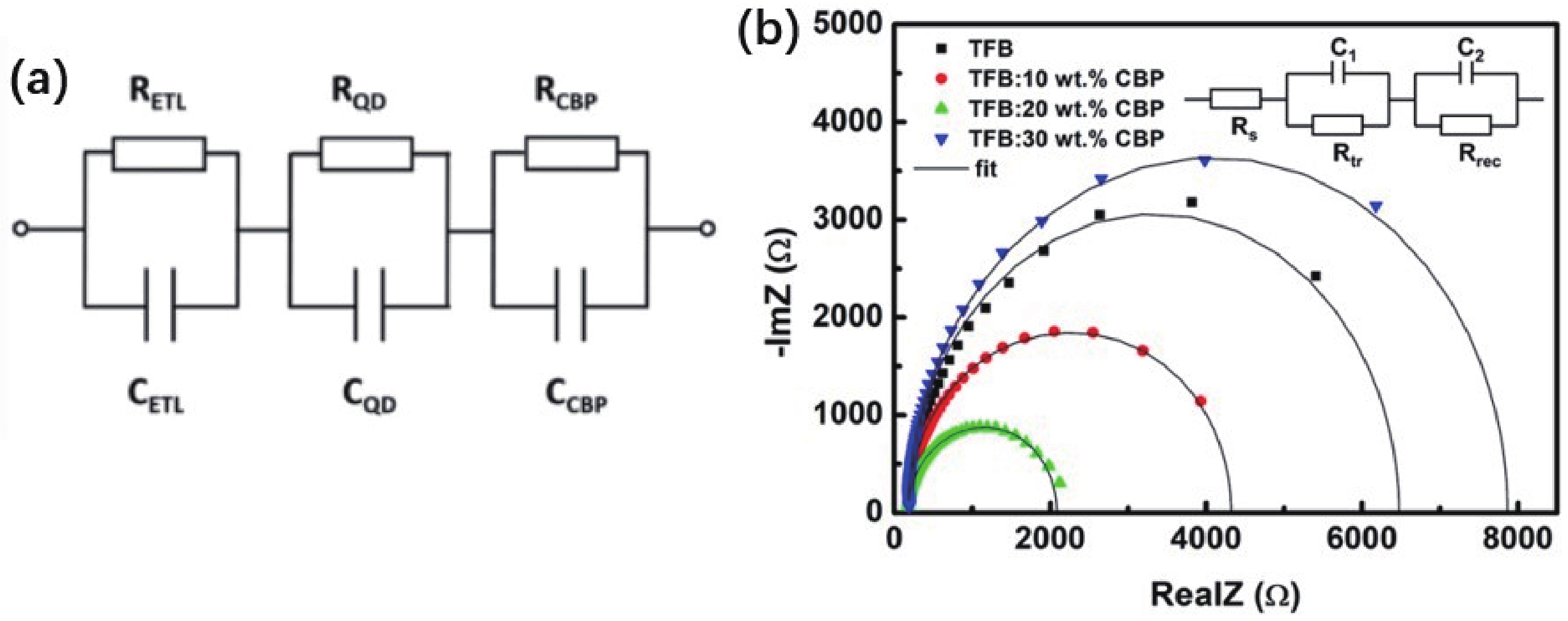
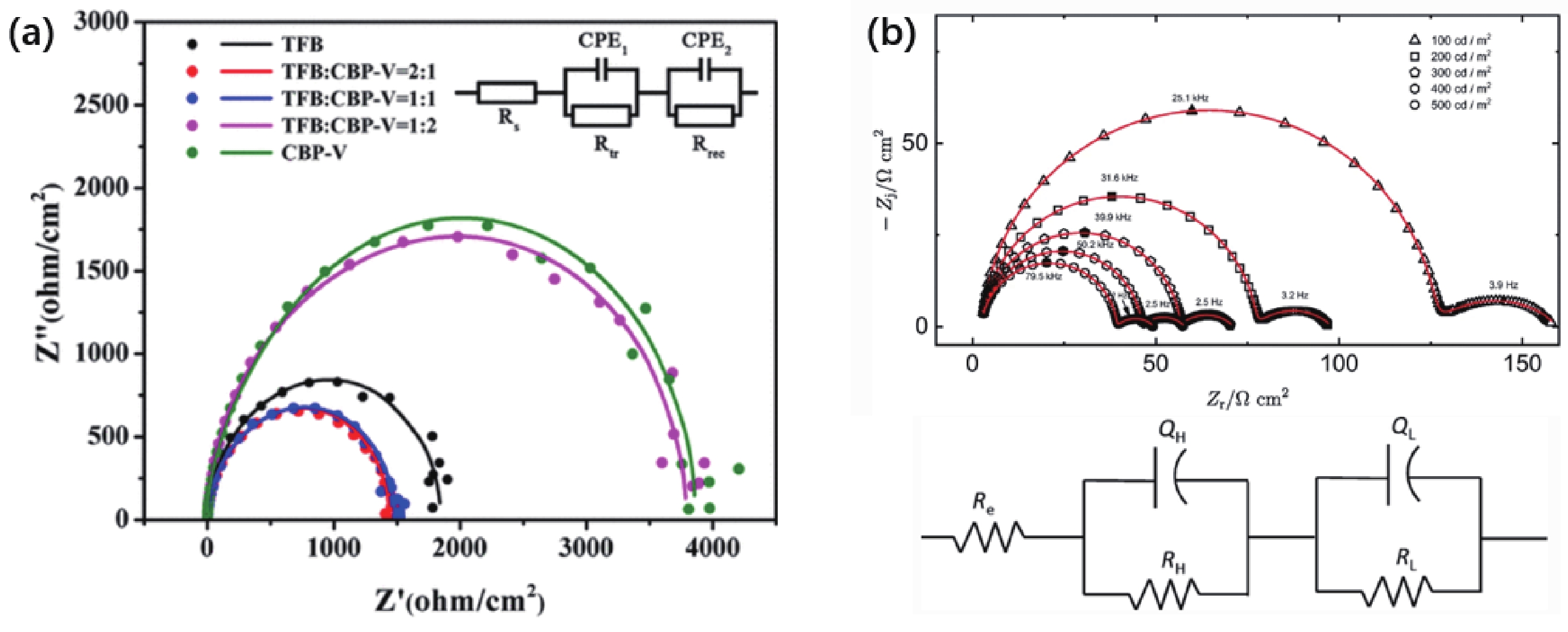
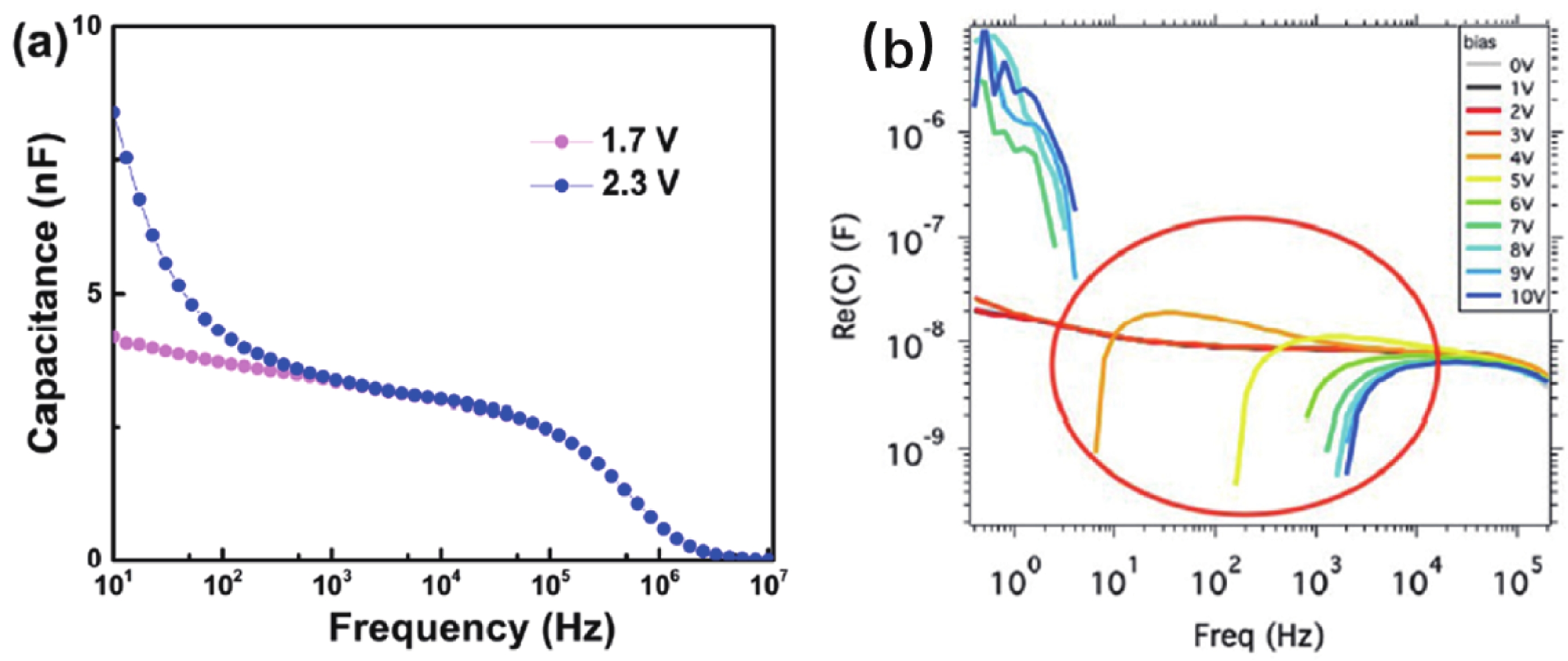
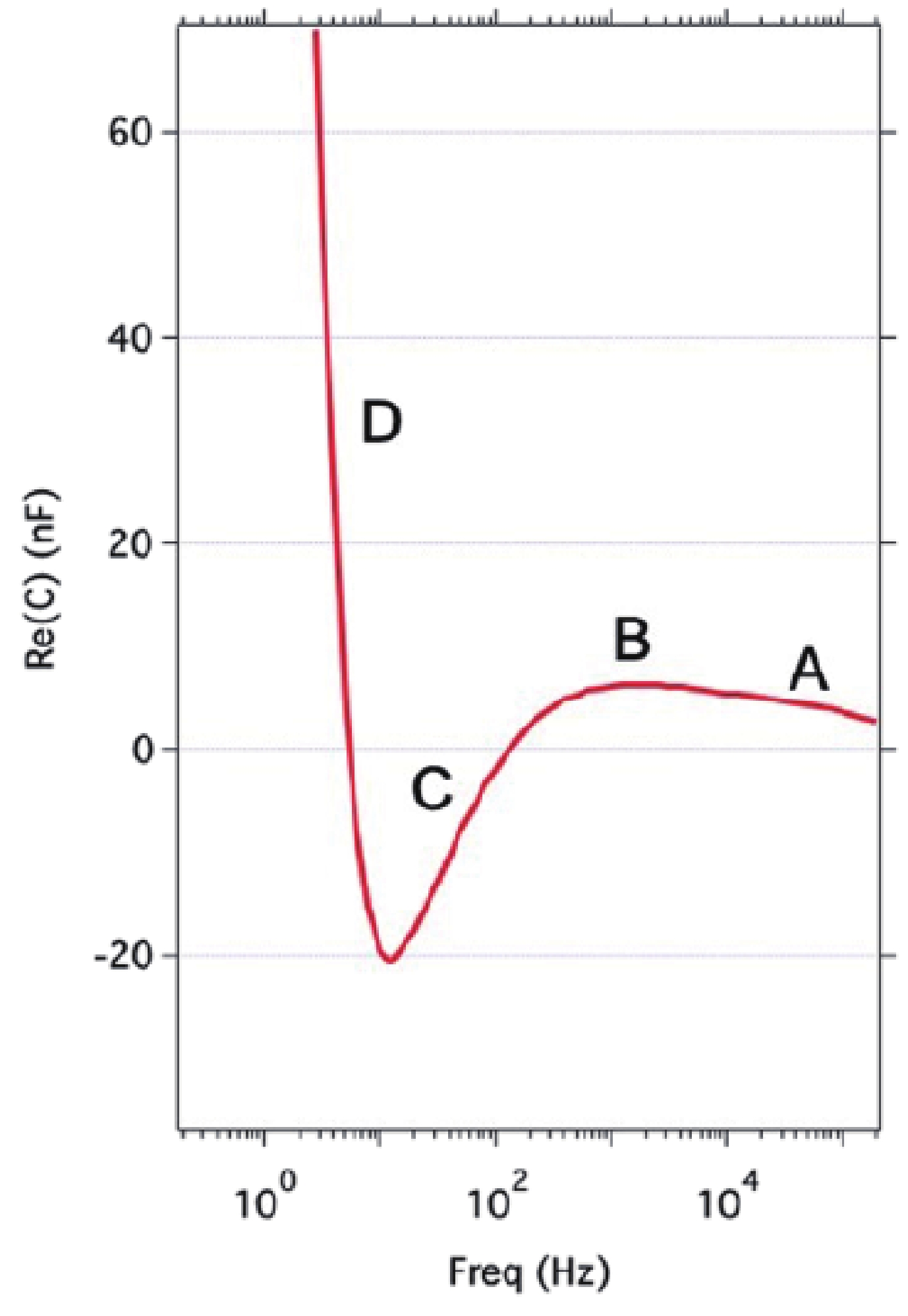
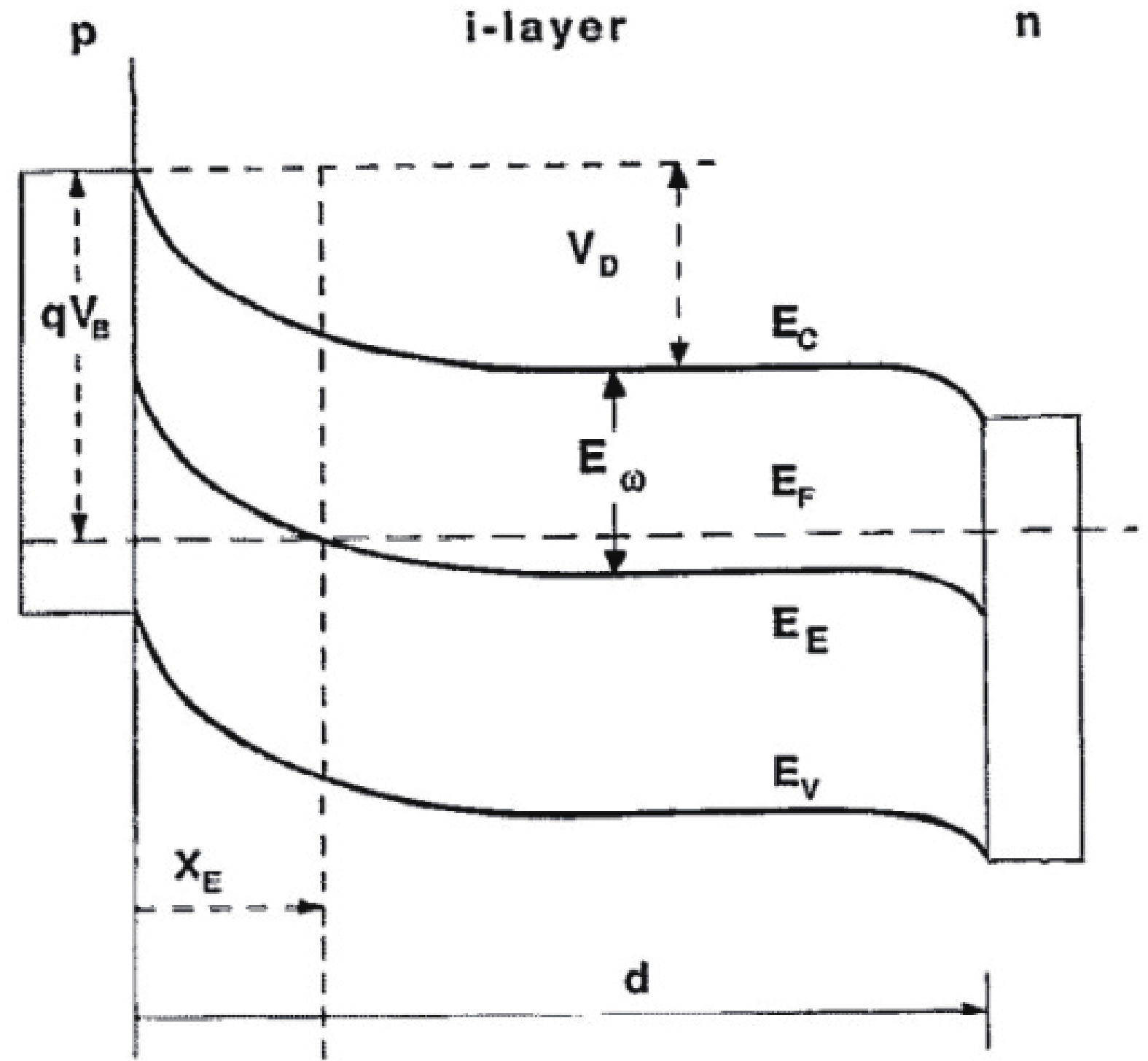
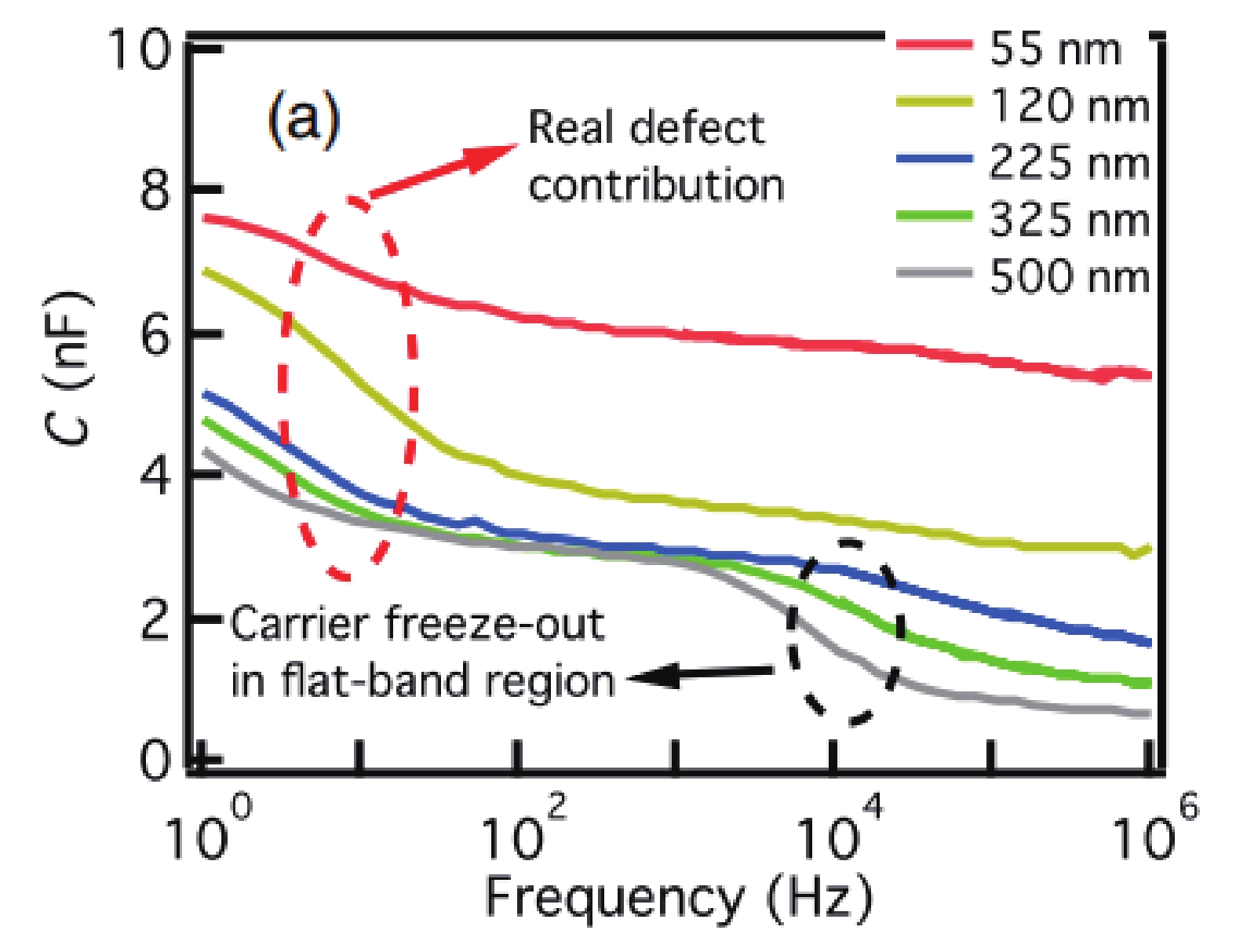


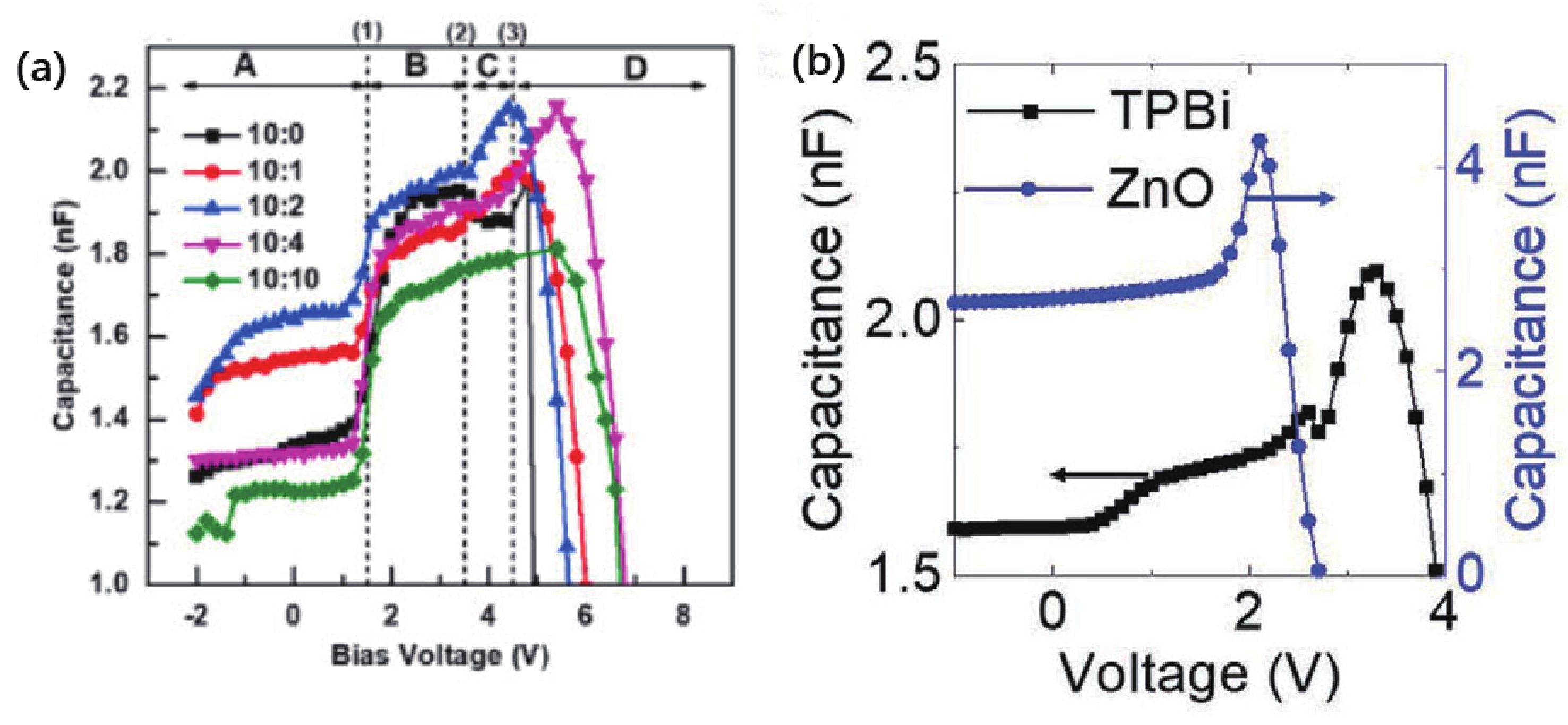
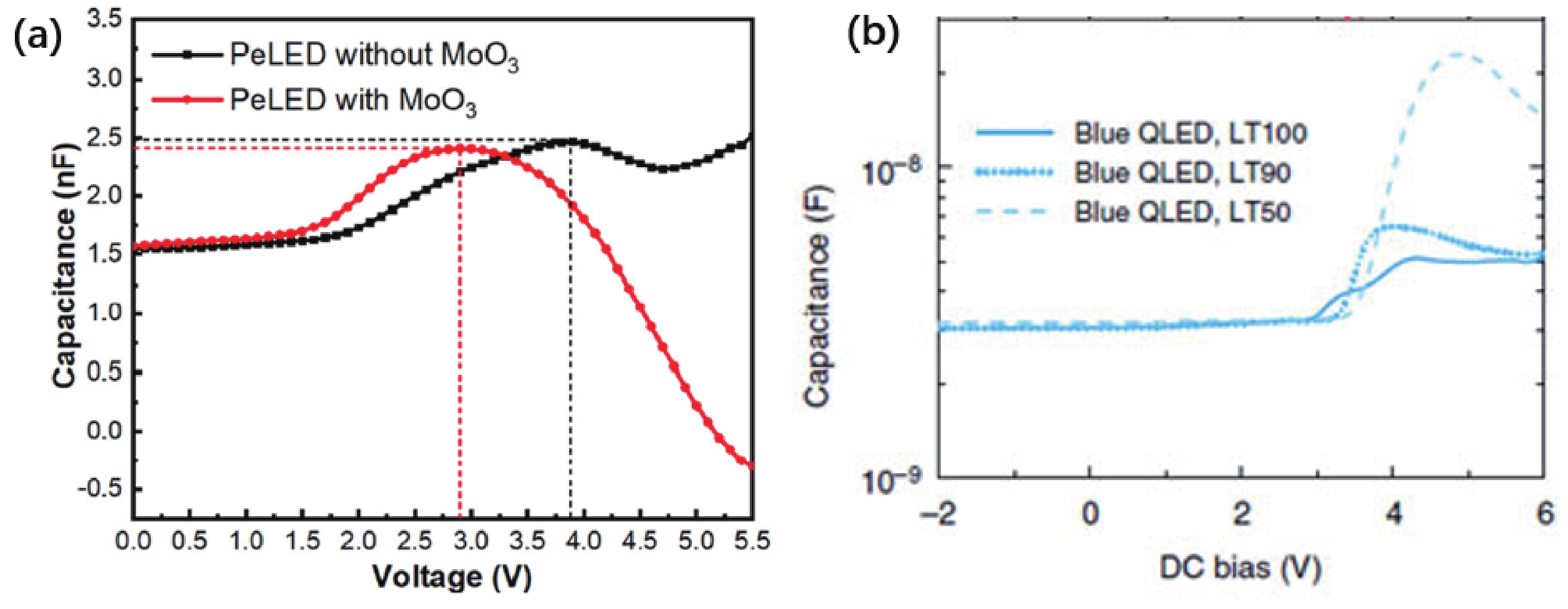
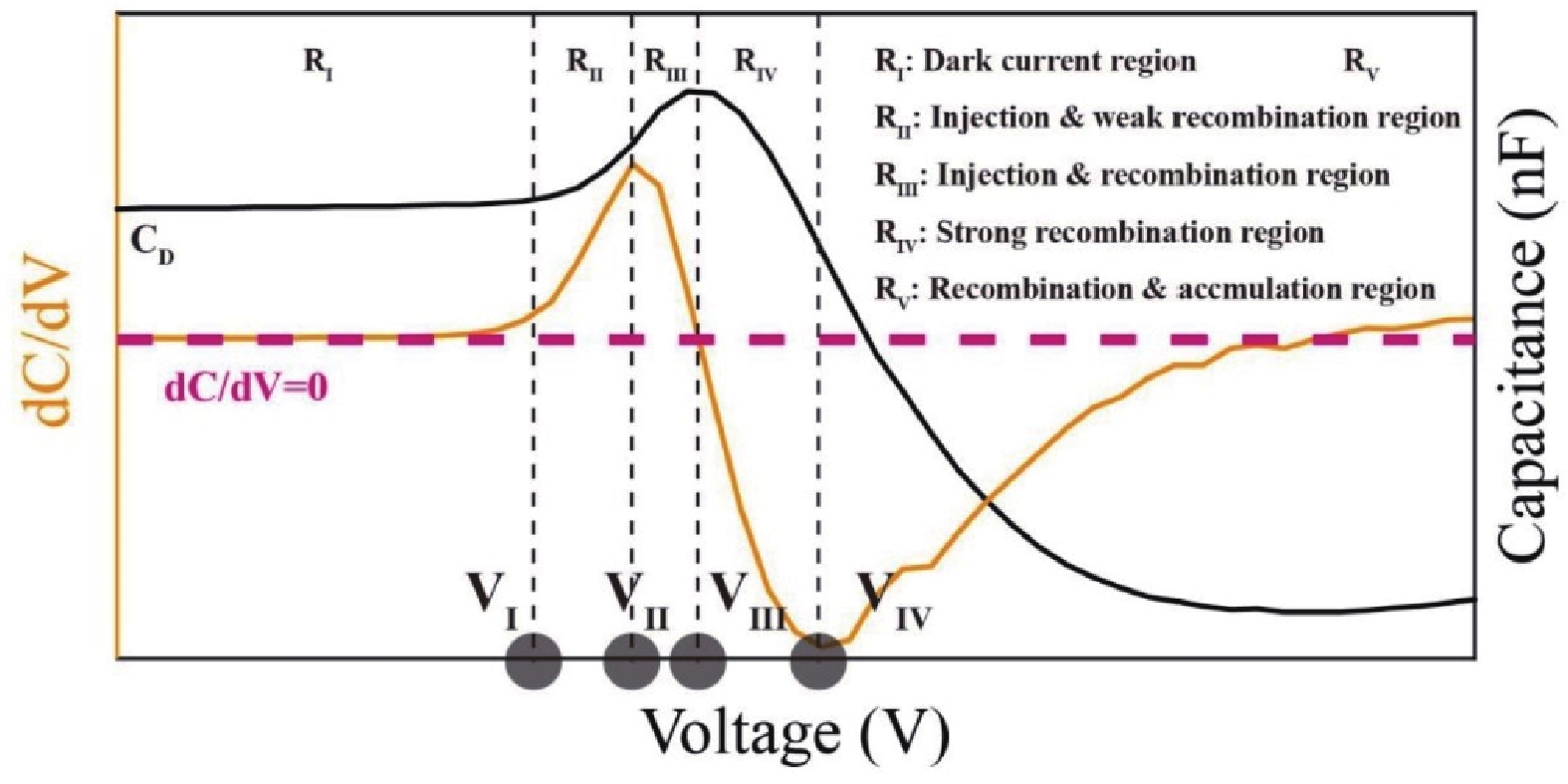
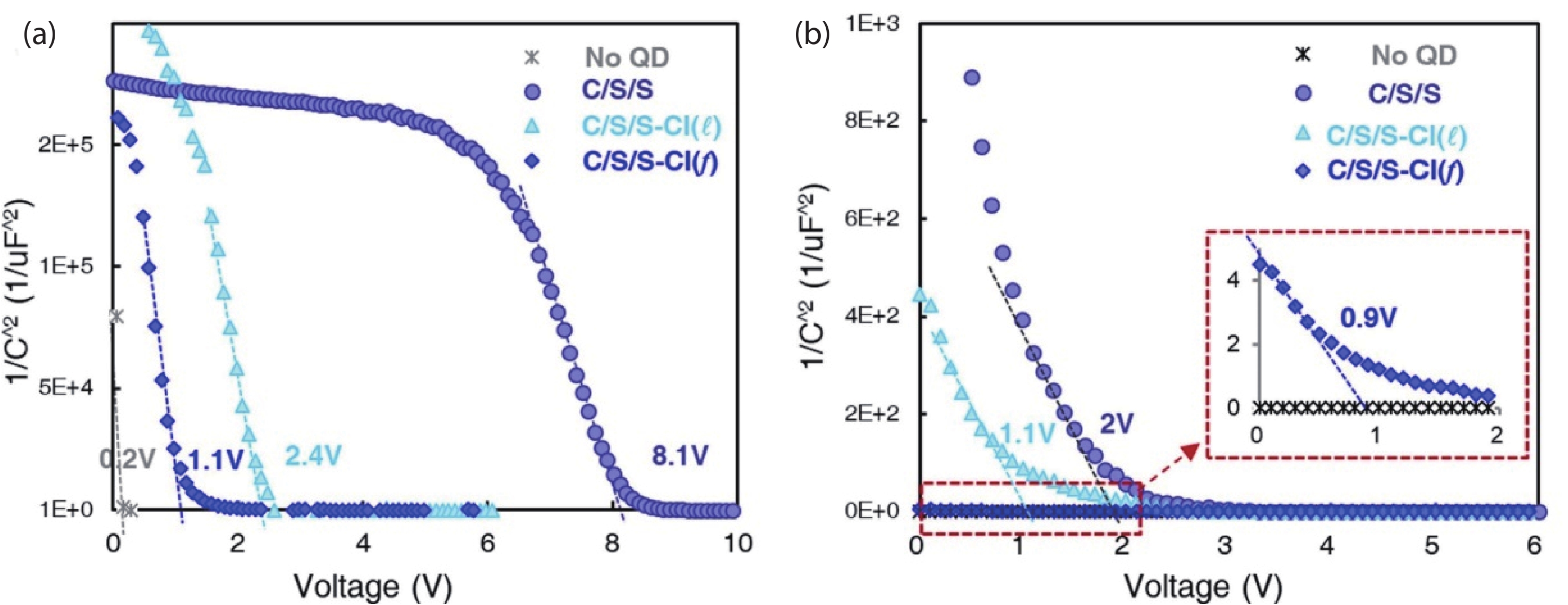










 Xiangwei Qu:got his doctoral degree from Southern University of Science and Technology (SUSTech), Shenzhen, China, in 2023, he is currently a postdoctoral researcher in SUSTech, his research focuses on device physics of quantum dot light-emitting diodes
Xiangwei Qu:got his doctoral degree from Southern University of Science and Technology (SUSTech), Shenzhen, China, in 2023, he is currently a postdoctoral researcher in SUSTech, his research focuses on device physics of quantum dot light-emitting diodes Xiaowei Sun:is a Chair Professor and the Executive Dean of the Institute of Nanoscience and Applications in the Southern University of Science and Technology, Shenzhen, China. He is an academician of the Asia-Pacific Academy of Materials, and the fellow of several other academic societies including Optica (formerly OSA), SPIE, and the Institute of Physics (UK). His main research presently is on high-quality displays based on nanocrystals and naked-eye 3D displays
Xiaowei Sun:is a Chair Professor and the Executive Dean of the Institute of Nanoscience and Applications in the Southern University of Science and Technology, Shenzhen, China. He is an academician of the Asia-Pacific Academy of Materials, and the fellow of several other academic societies including Optica (formerly OSA), SPIE, and the Institute of Physics (UK). His main research presently is on high-quality displays based on nanocrystals and naked-eye 3D displays



